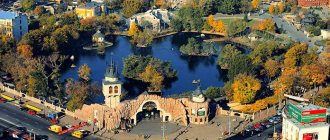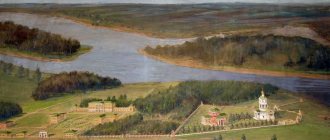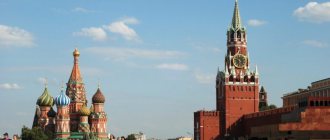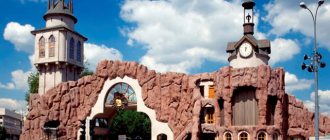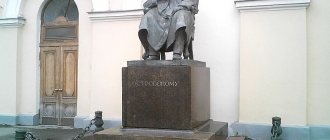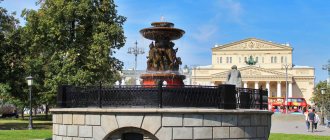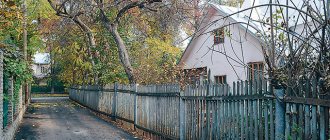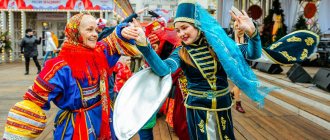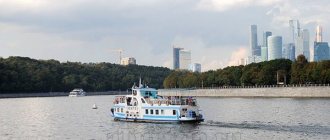The history of the Maly Theater begins around the same time as Moscow University, the Academy of Arts and the first Moscow gymnasiums. This was the period of the reign of Empress Elizabeth Petrovna, which coincided with the arrival of Enlightenment ideas in Russia. Starting with the creation of costumes for cadets who performed plays at court, in 1756 she signed a decree on the creation of a Russian state professional theater. At the same time, Moscow University had its own troupe consisting of students. Soon it began to include not only actors, but also singers, dancers and musicians.
In 1766, Catherine II, who ascended the throne, entrusted the management (enterprise) of the troupe to theater lover and writer Nikolai Titov. Three years later he was replaced by Italian entrepreneurs Belmonti and Cinti. Talented theater workers received permission to work in Moscow for five years. After Belmonti's death, a struggle broke out for the theater.
In 1776, the provincial prosecutor, Prince Pyotr Urusov, became interested in the theater. At that time, the troupe gave performances in the annex to Count Vorontsov’s house on Znamenka. But Urusov built his own building for the troupe, the facade of which faced Petrovka Street (now Teatralnaya Square). Soon there was a fire in the building, Urusov suffered serious losses and transferred the business to the English entrepreneur Michael Maddox. It is interesting that he came to Russia as a mathematics teacher, but gradually became interested in theater. Maddox promised to build a new building entirely at his own expense, and by 1780 it was ready.
In 1806, the theater became part of the system of imperial theaters. However, he seemed to be haunted by evil fate: shortly before this, a fire broke out in the building again. The artists had to perform at other venues. In 1816, a competition was announced for the construction of a new building on the same site.
In 1818, a young merchant Vasily Vargin bought up plots of land in the neighborhood. There he built a house with a concert hall and a gallery with shops. He was offered to lease the building to the theater, Vargin agreed. The mansion was rebuilt quickly, in just two months. Soon the troupe of the Moscow Imperial Theater began to play there.
The audience was diverse: wealthy spectators rented comfortable boxes for the entire season, the poorest were content with standing places in the gallery - tickets there were inexpensive. They showed vaudeville, opera buffe, and operetta. Applause was frowned upon.
Comedy and tragedy theater
The history of the Moscow Maly Theater began in 1756 with the decree of Elizaveta Petrovna: “We have now ordered the establishment of a Russian theater for the presentation of comedies and tragedies.” True, this was the time when only a theater troupe appeared - it was founded at the university and placed under the sensitive leadership of the famous poet and playwright Kheraskov (the same one who wrote the epic poem "Rossiada"). The University Free Theater served as the basis for the creation of the dramatic Petrovsky Theater. In addition to students, the troupe also included actors from serf theaters, the first of which was the theater of the landowner Volkov in Yaroslavl).
Maly Theater. Source: pinterest.com
Small building: today
In 2014, the theater closed for reconstruction. Before this, large-scale changes to the building took place in the 1940s under the leadership of architect Alexander Velikanov. His drawings were also used during the new reconstruction - adjusted to today's requirements. The rows in the stalls were moved apart - there were fewer seats, but it became possible to install seats for spectators with disabilities. The theater now has one more room - the new Shchepkinsky foyer, which now hosts concerts, musical evenings and exhibitions.
Artistic director Yuri Solomin asked not to remove the wooden deck from the ceiling of the auditorium - it creates good acoustics. They did not change the color scheme of the hall itself, made in red, white and gold tones. The prompter's booth has also been preserved (the Maly Theater is one of several in Moscow that still has prompters).
Four sculptures of Russian classics remained in their places - Alexander Pushkin, Mikhail Lermontov, Nikolai Gogol and Alexander Griboedov, installed in the foyer in 1949. Their works can most often be seen on the Maly stage.
Building from Beauvais and Thon
As often happened, the theater building burned down, and only in 1824 the architect Bove, the same one who built the Bolshoi Theater, created a project for rebuilding the mansion of the merchant Vargin, which became the building of the Maly Theater. Later it was rebuilt by the architect Ton and took its final form. Today, in front of the theater building there is a monument to Ostrovsky. At the same time, the theater became state-owned, which was very important: now the actors who came from serf theaters received freedom. At first, the Bolshoi and Maly theaters were connected by a single structure. Sometimes productions from one theater were transferred over time to the stage of another. And even operas appeared on the Maly stage from time to time, for example, Tchaikovsky’s “Eugene Onegin”.
Small building: yesterday
Initially, the names of the Bolshoi and Maly theaters were written in lowercase letters - they simply indicated the size of the buildings. For a long time, both imperial theaters were connected by an underground passage through which artists could move freely. This was especially convenient if the artist had to play on two stages in one evening. If the performance of a drama troupe based in a small theater was more suitable for the stage of a large one, then the performance was given there, and vice versa. One could often hear: “Today the small one plays in the big one.”
Now the stage of the Maly Theater is parallel to the stalls, but previously it was located at an angle to the hall - for a better view. The only decorations were a painted back curtain and hoops that hid the mechanisms of the upper part of the stage. During intermission, the hall was illuminated by a huge chandelier with candles, which rose to a special attic during the performance.
In 1840, a new auditorium and a new stage were added to the main building, which are still in use today, and the old ones were converted into backstage rooms.
In 1900, the actor, director and reformer of the national theater Alexander Lensky visited Germany. Having seen a turntable on one of the stages in Germany, he got the idea to stage the same one in Maly. He was refused: according to preliminary estimates, the cost of the work was comparable to the annual budget of all imperial theaters. Then Lensky reinvented the mechanism, enlisting the help of experienced decorator Carl Waltz. The mechanism was maintained until 1940.
The theater had two special boxes - the portal and the central one. Before the revolution, they were occupied by members of the royal family, and then by the main party leaders. From 1949 to the 1980s, absolutely everyone could buy tickets there. Not now: the central box is used for light and sound equipment, and the portal box is used only for high-ranking guests.
Mochalov and Shchepkin Theater
The announcement of the first performance at the Maly Theater can be found in the Moskovskie Vedomosti for 1824. It is interesting that there the name of the theater was written with a small letter, because this simply indicated the small size of the theater. But soon Maly became so popular that his name began to be respectfully written with a capital letter. Not the least role in the growing fame of the theater was played by its famous actors - Shchepkin and Mochalov. Shchepkin was a former serf actor, he even had to play female roles, for example, Eremeevna in “The Minor” and Baba Yaga in Gorchakov’s opera. Mochalov was also born into a family of serf actors, and he became one of the greatest tragedians of the 19th century. His single heroes quickly made him famous: Hamlet, Richard III, Chatsky.
Photo of Shchepkin in the newspaper on the 50th anniversary of his death. (wikipedia.org)
THEATER LISTENS TO THE REVOLUTION
After the October Revolution of 1917, no less difficult times came for the Maly Theater, associated with the need to organically fit into modernity, while maintaining its originality. In 1919, the Maly Theater was awarded the title of academic. But at the same time, the theaters of the left front, created in the wake of the revolution, reject academic theaters, which means they are outdated and useless for the people. There is a call to close them altogether, as a stronghold of bourgeois-noble culture. The first People's Commissar of Enlightenment, A.V. Lunacharsky, comes to the defense of the Maly Theater.
A landmark production for the Maly Theater after the revolution was the play Lyubov Yarovaya
based on the play by K.A. Trenev in 1926 (directed by I.S. Platon and L.M. Prozorovsky). A high level of stagecraft was demonstrated by theater veterans V.O. Massalitinova, S.L. Kuznetsov, E.D. Turchaninova, V.N. Ryzhova, P.M. Sadovsky, V.N. Pashennaya and actors of the middle generation: E.N. .Gogoleva, S.N.Fadeeva, N.A.Annenkov and others. The “museum” art of the Maly Theater turned out to be extremely viable. In a tightly knit, dynastically closed troupe, roles and even interpretations themselves were inherited. The later roles of G.N. Fedotova were subsequently transferred to A.A. Yablochkina, and the repertoire of O.O. Sadovskaya was inherited by V.N. Ryzhova and V.O. Massalitinova. But in the 1930s, the Maly Theater troupe was replenished with artists from other theaters (N.M. Radin, M.M. Blumenthal-Tamarina, E.M. Shatrova, D.V. Zerkalova) and from the theater of V.E. Meyerhold, closed by that time as a theater of “hostile aesthetics.” The theater, which at one time headed the left front, was disbanded, and its leading artists - I.V. Ilyinsky, M.I. Tsarev, M.I. Zharov took a worthy place in the traditional academic theater. These formerly polar poles, in the late 1930s. brought together due to the unfading, romantically elevated theatricality, external stage expressiveness characteristic of such different, seemingly aesthetically diametrically opposed groups. As for directing, in the Maly Theater, as a rule, this is a “director with the actors,” and very often in practice, theater actors act in performances staged by them (I. Ilyinsky, B. Babochkin, V. I. Khokhryakov, etc. .).
Gogol and Ostrovsky Theater
The Maly Theater was the center of cultural life. His extensive repertoire included works by Shakespeare and Schiller, Pushkin and Griboedov. It was on the stage of Maly in 1831 that the comedy “Woe from Wit” was first fully shown, where Shchepkin played Famusov, and Mochalov played Chatsky. Here in 1836 they showed Gogol’s “The Inspector General” and staged “Dead Souls”, “Marriage” and “Players”. But Maly’s most beloved author was, of course, Alexander Nikolaevich Ostrovsky. During his life he wrote 48 plays, and all of them were staged on the Maly stage. The year 1859 was marked in the theatrical life of Moscow with the premiere of The Thunderstorm. The play caused fierce controversy among critics; Dobrolyubov, Pisarev and Grigoriev wrote about it.
“The Thunderstorm” staged by the Maly Theatre, late 19th century. (wikipedia.org)
Works by other Russian classics were also staged on the Maly stage. For example, the trilogy of Alexei Konstantinovich Tolstoy “Tsar Ivan the Terrible”, “Tsar Fyodor Ioannovich”, “Tsar Boris” was very successful. But the theater’s relationship with Chekhov during the writer’s lifetime did not work out, so only his vaudevilles were performed on stage. But today “The Seagull”, “The Cherry Orchard” and “Three Sisters” have firmly taken their place in the repertoire.
ON THE WINGS OF ROMANCE
In the 1880s, a need arose in society for theatrical experiences and romantic heroics, since everyday reality was impoverished in it.
There was a gradual change of generations. Just as in 1850 the theater of the playwright Ostrovsky replaced the Shchepkin Theater, the next page of the Maly Theater will, of course, take place under the sign of the great M.N. Ermolova. The actress played a number of her best roles in Ostrovsky’s plays (Katerina in the Thunderstorm
, Negina in
Talents and Fans
, Kruchinina in
Guilty Without Guilt
and others). But this is a different, more modern Ostrovsky, cleared of those everyday excesses that began to burden and overwhelm the recent drama innovator. And this was precisely the “enlightened”, poetic truth that Shchepkin insisted on in his last decade.
Ermolova’s associates were A.P. Lensky, A.I. Yuzhin, K.N. Rybakov, E.K. Leshkovskaya, A.A. Yablochkina, and later A.A. Ostuzhev. The magnificent ensemble of the Maly Theater was also decorated by O.O. and M.P. Sadovsky, from the famous dynasty, irreplaceable, first of all, in Ostrovsky’s repertoire.
More than once, at performances with the participation of M.N. Ermolova, political manifestations of students and democratic intelligentsia took place, which once again proves the enormous social significance of the Maly Theater.
But the theater also experienced crises. At the turn of the 19th–20th centuries. The importance of the theater has weakened somewhat. The repertoire became smaller, and the direction lagged behind modern times. The Maly Theater was primarily looking for ways to renew the art of the actor and director A.P. Lensky. However, the New Theater he created, a branch of the Maly Theater, was unable to implement the reform program. A.I. Yuzhin, who headed the theater in 1909, sought to strengthen the position of the theater, but his attempts were not crowned with success. The crisis of the Maly Theater reflected the general theatrical crisis, the way out of which was the creation in 1898 of the Moscow Art Theater, possible only on the basis of radical comprehensive theatrical reforms. These reforms were carried out by K.S. Stanislavsky and V.I. Nemirovich-Danchenko - the first directors in the modern sense of the word. Remembering his theatrical youth, Stanislavsky more than once said that Ermolova and Lensky are examples of creativity, examples of the true “life of the human spirit” on stage, examples of true service to the theater, which the great director himself professed.
Preserving traditions
The beginning of the 20th century was difficult for the theater. Despite the innovative trends that spread throughout Russian theaters, Maly remained faithful to traditions. In 1918, a theater school was opened at the theater, which later grew into the Shchepkin Higher Theater School. After the revolution, the Maly Theater was on the verge of extinction: the theater commissariat believed that the Imperial Theater was not needed by the new audience. Fortunately, Lunacharsky came to his defense in time, and Maly was saved. In the 30s and 40s, the theater mainly returned to the classics, preferring not to stage works by contemporary authors. Then Ostrovsky, Gogol and Griboyedov appeared on the stage again.
"The Inspector", 2019. Source: 2do2go.ru
During the war, the theater did not stop working. After the war, they also mostly staged classics: Gorky’s “Vassa Zheleznova,” Lermontov’s “Masquerade,” Shakespeare’s “Macbeth,” Racine’s “Phaedra,” Flaubert’s “Madame Bovary” and Thackeray’s “Vanity Fair.” Today the theater also adheres to traditions, introducing Ostrovsky and Chekhov to the audience. In addition, the theater troupe constantly tours around the world. Maly was also the initiator of the creation of the All-Russian festival “Ostrovsky in Ostrovsky’s House” - the “singer of Zamoskvorechye” is remembered and honored in Maly to this day.
THE AUTHOR COMES TO THE THEATER
From the mid-1850s, A.N. Ostrovsky, the “Russian Shakespeare,” became the main playwright of the theater. Forty-seven of his plays were staged at the theater, making up an entire era in the history of Russian theater. “The first performance of the first national drama, don’t get into your own sleigh
solemnly took place in Moscow. It did several miracles: the first: it immediately put the great actor P. Sadovsky on a pedestal, the second: it immediately created the brilliant talent of S. Vasilyev, the third: it immediately tore the national Russian artist L.P. Nikulina-Kositskaya away from vile and sentimental dramas, at least for a while ..."
A brilliant galaxy of actors grew up based on the dramaturgy of A.N. Ostrovsky. In addition to those already mentioned, this is S.V. and E.N.Vasilievs, N.V.Rykalova, N.N.Medvedeva, N.A.Nikulina, V.Borozdina, G.N.Fedotova, N.I.Muzil and others. Ostrovsky was directly involved in the life of the Maly Theater, he was the director of his plays, demanding from the actors the correctness of the found “tone”, a harmonious ensemble of all performers, a high culture of stage speech, authenticity and artistic unity of all components of the performance. Therefore, the Maly Theater will also be called the “Ostrovsky House”. Despite the unjustified dominance of one-day plays in the theater’s repertoire, the general direction in the 19th century, along with Ostrovsky’s works, was determined by classical dramaturgy, Russian and foreign.
The work of the great Russian tragic actress M.N. Ermolova flourished on the best examples of Western drama. Making her debut in the role of Emilia (G.E. Lessing, Emilia Galotti
), demonstrating remarkable temperament and strength of passion, the actress subsequently created a gallery of heroic female images, which was united by the theme of protest against the inhumanity of society and the affirmation of individual dignity and rights.
(Laurencia - Sheep Spring
by Lope de Vega, Maria Stuart -
Maria Stuart
by F. Schiller and Joan of Arc -
Maid of Orleans
by the same author, and many others).
Not only hot pathos was characteristic of Ermolova’s art, but also special sincerity, warm lyricism, and subtlety of psychological experiences.
Story
In 1914, the architect Spirin created a project according to which the Kino Palace on Bolshaya Ordynka was rebuilt into the Struisky Theater. This building was mostly visited by the population of Zamoskvorechye. Soon it was transformed into the Theater of Miniatures. After the 1917 revolution, the theater was nationalized by the Bolsheviks. A variety of troupes performed on stage, presenting performances of many styles. In 1922, the theater of the Zamoskvoretsky Council was formed here. Three years later it received the name of the Moscow Lensovet Theater. Only in 1943, during the war, was a branch of the Maly Theater on Ordynka formed here. The first performance took place on January 1, 1944, based on Ostrovsky’s play “In a Lively Place.” The first premiere took place on January 25, 1944, it was the play “Engineer Sergeev”.
Theater during the war
During World War II, the Maly Theater on Ordynka took an active part in the fight against the fascist invaders. The theater troupe contributed to the great victory. The artists were part of front-line brigades and performed for soldiers in hospitals and military units. In 1943, a Front Branch was even formed. The team was given one task - artistic service to the soldiers of the Soviet Army. In total, the Maly Theater and its Frontline branch gave more than 2,700 concerts and performances. All funds accumulated by the team were used to build a squadron of aircraft, which was transferred to the active army. In 1944-1945, this squadron successfully defeated the Nazis in the skies of East Prussia.
